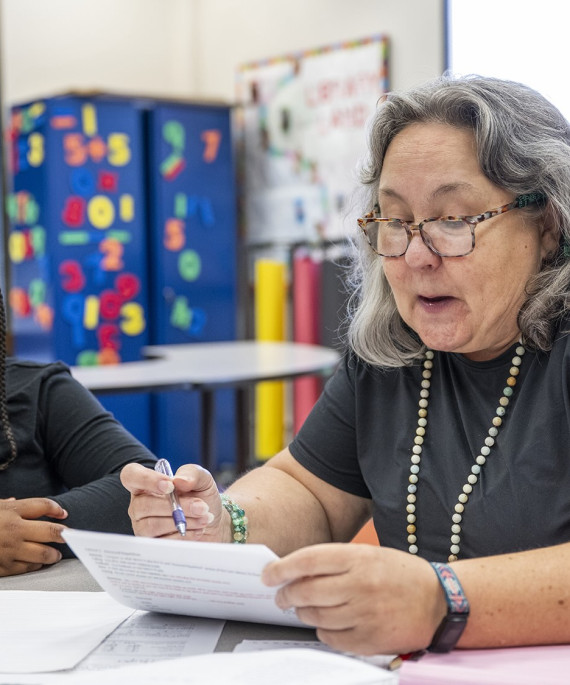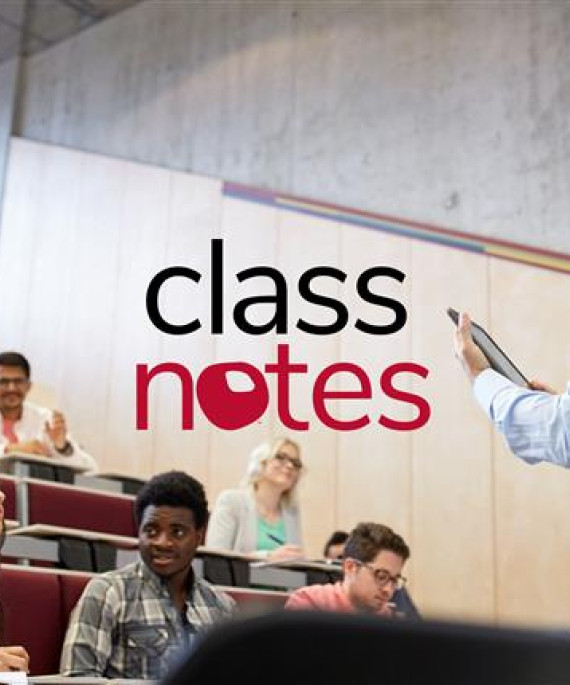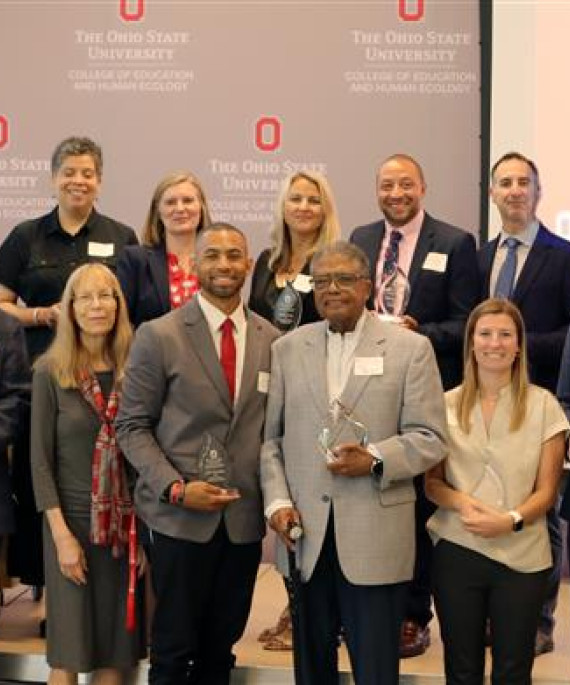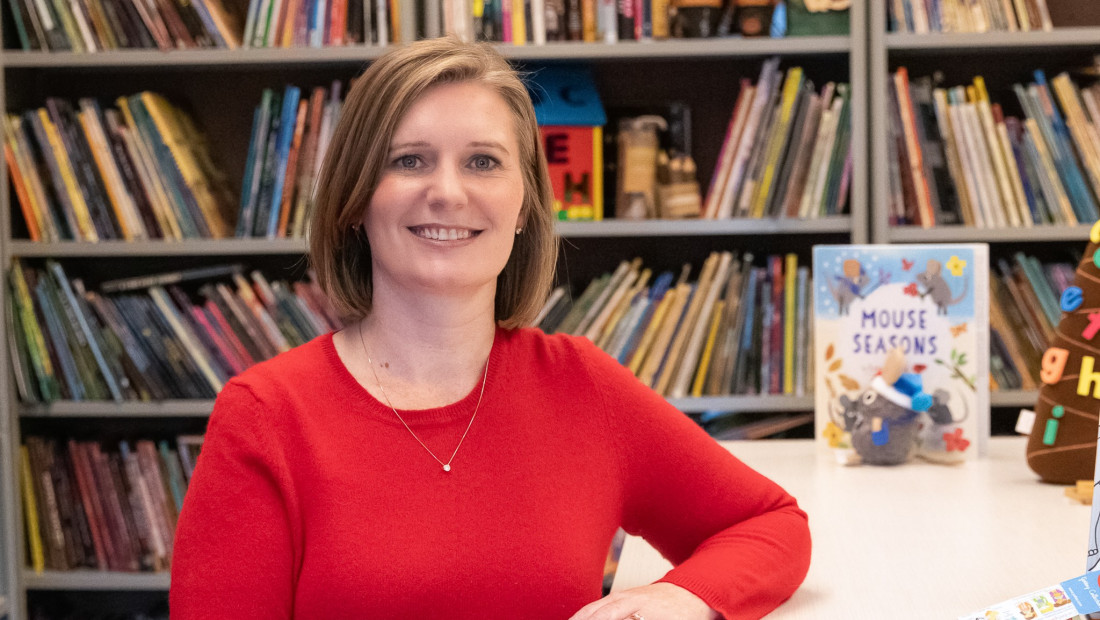
How kids learn to read: The roots of her interest
She has become an internationally recognized researcher on literacy, so well regarded that collaboratives, federal funders and publishers seek her expertise. But when Shayne Piasta was growing up in Massachusetts, she simply followed her mom, a preschool teacher and director, to work.
“I just loved being around kids. I babysat, nannied, spent time in my mom’s classrooms,” she said. “I was a super nerdy kid, so I would go with her to professional development workshops in which she participated.”
While an undergraduate at the College of the Holy Cross, Piasta tutored a boy who had dyslexia. “His teacher would coordinate packets of activities for me to do with him as extra reinforcement,” she said. “I started being really interested in how kids learn, particularly with respect to helping kids learn to read.”
She was studying psychology, and her undergraduate advisor was a reading researcher. Based on the insights she was gaining from psychology about how kids learn, as well as by reading literacy research, Piasta began to see a disconnect. The professional development events that her mother attended and the approaches recommended in publisher brochures sent to her mom’s preschool differed from what she was learning in her college courses.
“I thought research and evidence could lead us down a better path,” she said. “I’m a developmental psychologist by training, but everything I do is about how young children learn and develop literacy skills, and how teachers can best support them on the path to literacy success.”
Now a professor of Literacies, Literature and Learning, Piasta has dedicated 15 years of unswerving commitment to literacy research. She has major federal grants to determine what works best in the science of reading. Her research is cited by the U.S. Institute of Education Sciences and within the federal What Works Clearinghouse. Her work informs Ohio’s Plan for Raising Literacy Achievement and associated efforts by the Ohio Department of Education.
As a result, she is among the most highly regarded and most rigorous research experts in the science of reading for young children, both within the United States and internationally.
In recognition, she was recently awarded the inaugural Carol Connor Mid-Career Award from the internationally respected Society for the Scientific Study of Reading.
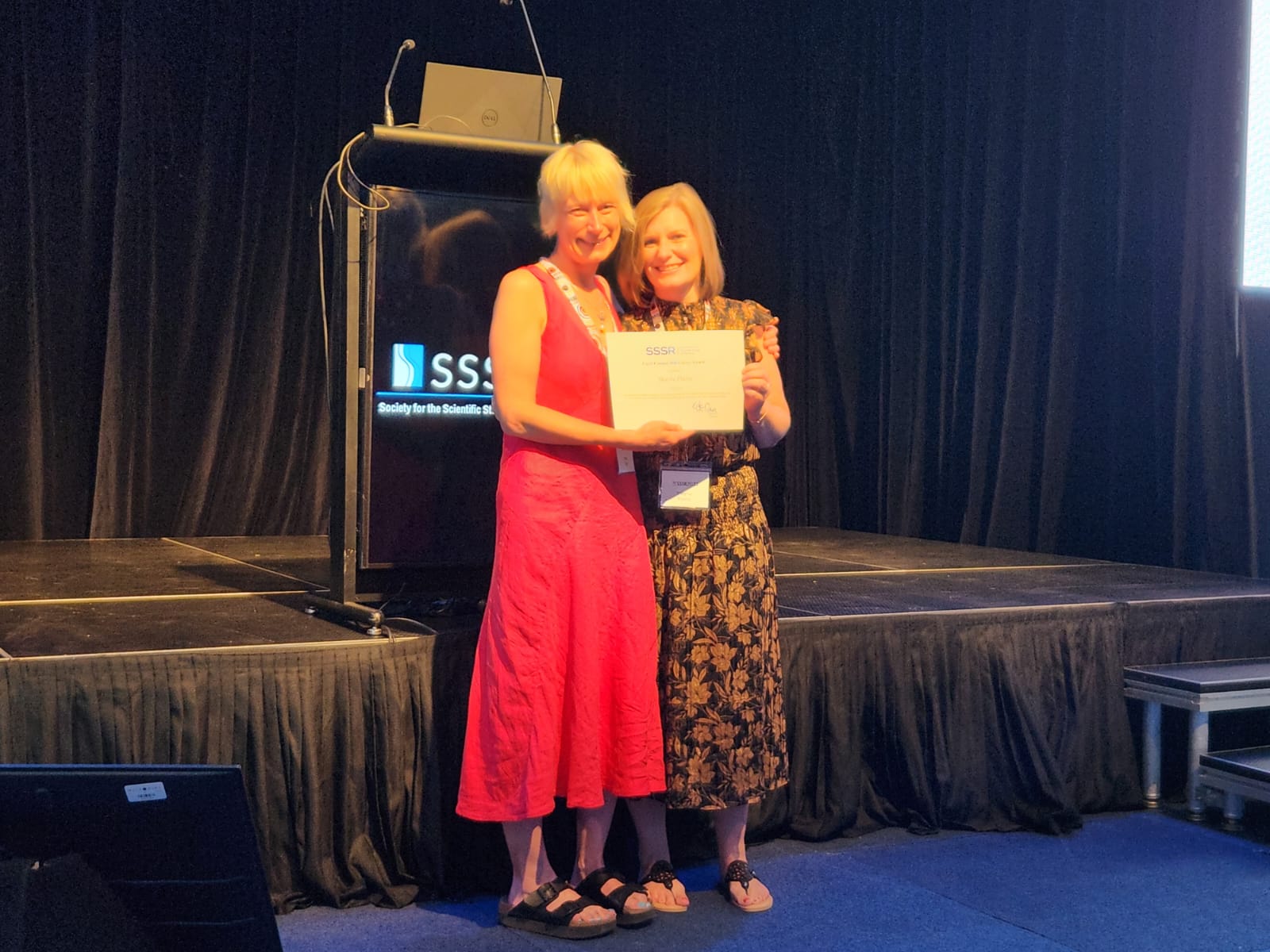
Faculty collaborators highlight Piasta’s expertise
The award recognizes not only Piasta’s research, but also how she is following in her esteemed mentor’s footsteps.
Connor was a faculty member at Florida State University’s Florida Center for Reading Research and an important role model while Piasta earned her graduate degrees. “My first-ever journal publication was about teacher knowledge and literacy practices with Carol,” Piasta said. “She took me to my first conference. She was a female researcher in a field where I wanted to be.”
Piasta’s four nominators for the award are colleagues at other universities and at university medical centers.* They wrote in their nomination letter, “Dr. Piasta is a remarkable candidate for this prestigious award due to the national notoriety and large-scale impacts of her scholarship to the science of reading. …”
“Her foundational work in alphabet learning as well as understanding the effectiveness of early literacy interventions and professional learning for educators are moving forward the field in unique ways around the science of reading.”
Early alphabet knowledge: Setting national standards, winning awards
Piasta’s 2012 article** in the Journal of Educational Psychology documented her study showing that children who know 18 uppercase and 15 lowercase letter names by the end of preschool are more likely to have first-grade literacy success.
Back then, little agreement existed about appropriate benchmarks for preschool letter-naming abilities, the article said.
“Of those benchmarks that were set, none had been empirically investigated to determine their merit.” Piasta and her co-authors* wrote.
After Piasta’s research was published, Head Start adopted her alphabet knowledge benchmarks.*** Other national and state programs, as well as national organizations, followed suit.
She is so well known that organizations invite her to work with them. She is a faculty representative with the P20 Literacy Collaborative, a community of practice that is a collaboration between the Ohio Deans Compact and the Ohio Department of Education.
Most recently, she was invited by the federal Institute of Education Sciences to write a blog describing her Predoctoral Interdisciplinary Research Training Fellowship, which is sponsored by that agency. She described the many ways in which the fellowship helped launch her research career. Her multiple research awards include grants from the institute.
Why alphabet letters are important to early learning
The college’s own A. Sophie Rogers School for Early Learning is just one example of an early learning center that uses Piasta’s benchmarks as goals for pre-kindergarteners.
“One of Ohio's early learning content developmental standards as an indicator for kindergarten readiness is that children would be able to identify 18 uppercase letters and 15 lowercase letters,” said Samantha Peterson, assistant principal of the school.
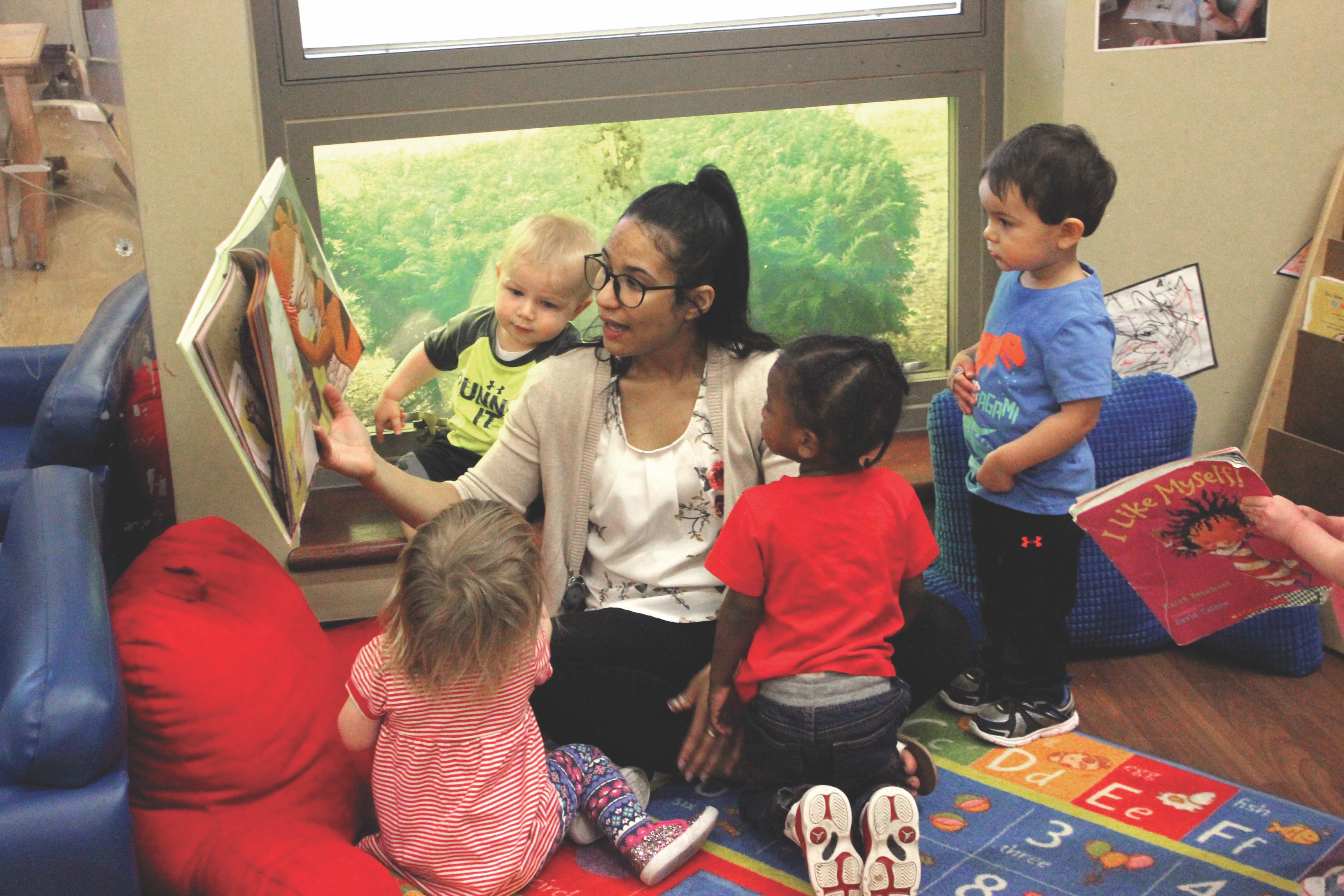
“While that alone doesn't necessarily guarantee literacy success,” she said, “what Shayne’s research indicates is that without alphabet knowledge, it's much harder as you enter kindergarten to start blending (letter sounds to make words) and segmenting words if you don't have that general basis of what letters are and what sounds they make.”
Piasta and her colleagues explained it this way in their 2012 research article: “In learning about individual letters, children develop their initial understanding of the symbolic nature of written language.”
Peterson said that rather than having specific lessons on letter learning, their preschool teachers integrate it into everyday activities.
“They plan lessons to showcase letters, for instance in songs they're singing with children,” she said. Letters can be highlighted during story time or in artwork or games. “It’s seamlessly interwoven, so the children are exposed to how we use letters in reading, writing and verbal expression.”
Education program teaches how to address each child’s learning needs
Now with substantial evidence about child development, how they learn to read and best practices for how to support them, Piasta said it’s critical to map that to what children already know and what they need to learn.
Differentiated instruction addresses the fact that not all children learn at the same pace.
Piasta outlined the instructional cycle that she teaches in the college’s core teacher preparation courses for reading. “First, we teach how to conduct an assessment to understand what the child already knows and can do. Then we assess for areas where we can support them to make further progress.”
The college students prepare lesson plans based on the assessment. Then they use evidence-based teaching methods to present the lesson. This includes working with children in local partner schools.
After teaching, “we evaluate to see how effective we were and if the child is making progress,” Piasta said. “This assessment-to-instruction cycle is the underlying premise for all our core teaching courses.”
Recognition by the field and beyond
Piasta said that education research has profound implications for educators’ knowledge and beliefs, classroom practices and children’s learning, as well as community and federal policy.
She has evaluated several early literacy programs, including the Nemours BrightStart! Program, which was funded by the Institute for Education Sciences. The institute also funded her evaluation of Read It Again!, which is now offered for free with no-cost training.
She was also a member of the Language and Reading Research Consortium, a national endeavor that developed and evaluated the language-focused literacy curriculum Let’s Know!, another free resource.
Her recent projects continue to identify effective ways to support children’s early word reading skills as well as their oral language skills through a program called Let’s Know!2. Both skills are critical components of the science of reading.
For this research and much more since, Piasta has won multiple awards. Among the most prestigious, she was one of only two educators to receive the federal government’s 2017 Presidential Early Career Award for Scientists and Engineers.
Given that Carol Connor received this same award in 2006, Shayne Piasta has indeed come full circle.
*Shayne Piasta’s four nominators for the Carol Connor Mid-Career Aware are Jessica Logan, formerly faculty with the college and a regular research collaborator, now associate professor of special education at Vanderbilt University; Rachel E. Schachter, former Crane Center for Early Childhood Research and Policy postdoctoral fellow, now associate professor and director, Kit and Dick Schmoker Reading Center, University of Nebraska; Hope Gerde, professor of teaching, learning and culture, School of Teaching and Human Development, Texas A&M University; and Alida K. Hudson, clinical assistant professor and director, Clinic for Advanced Literacy Studies, Texas A&M University.
**Piasta was lead author of the 2012 journal article. Her co-authors were Yaacov Petscher, professor of social work at Florida State and associate director of the Florida Center for Reading Research; and Laura Justice, professor of educational psychology in the college and executive director of the Crane Center for Early Childhood Research and Policy.
***To see the alphabet benchmarks on this website, scroll down and choose Literacy block in the Preschooler Domains, then under Preschooler Literacy Sub-Domains, choose Print and Alphabet Knowledge.

